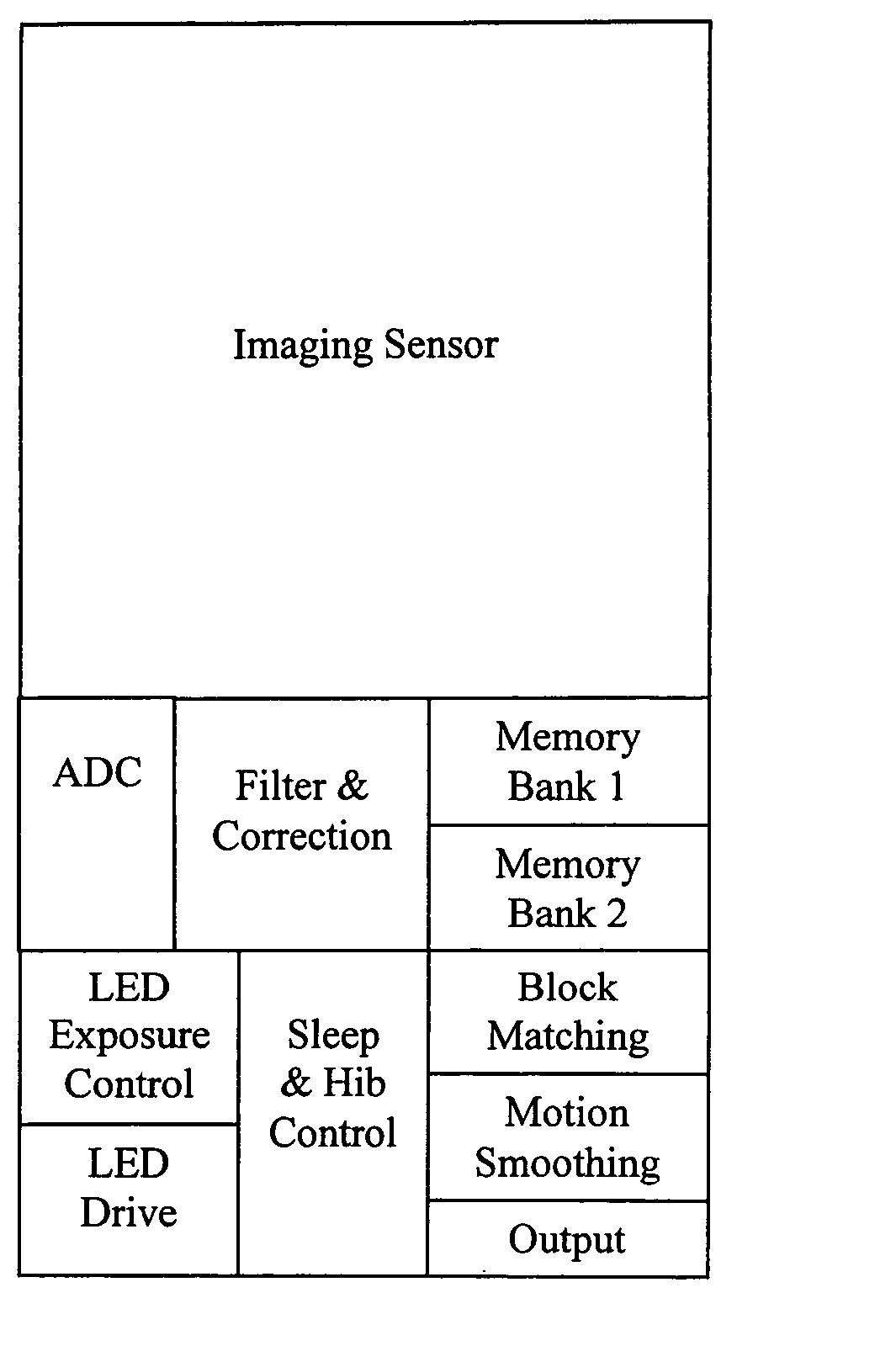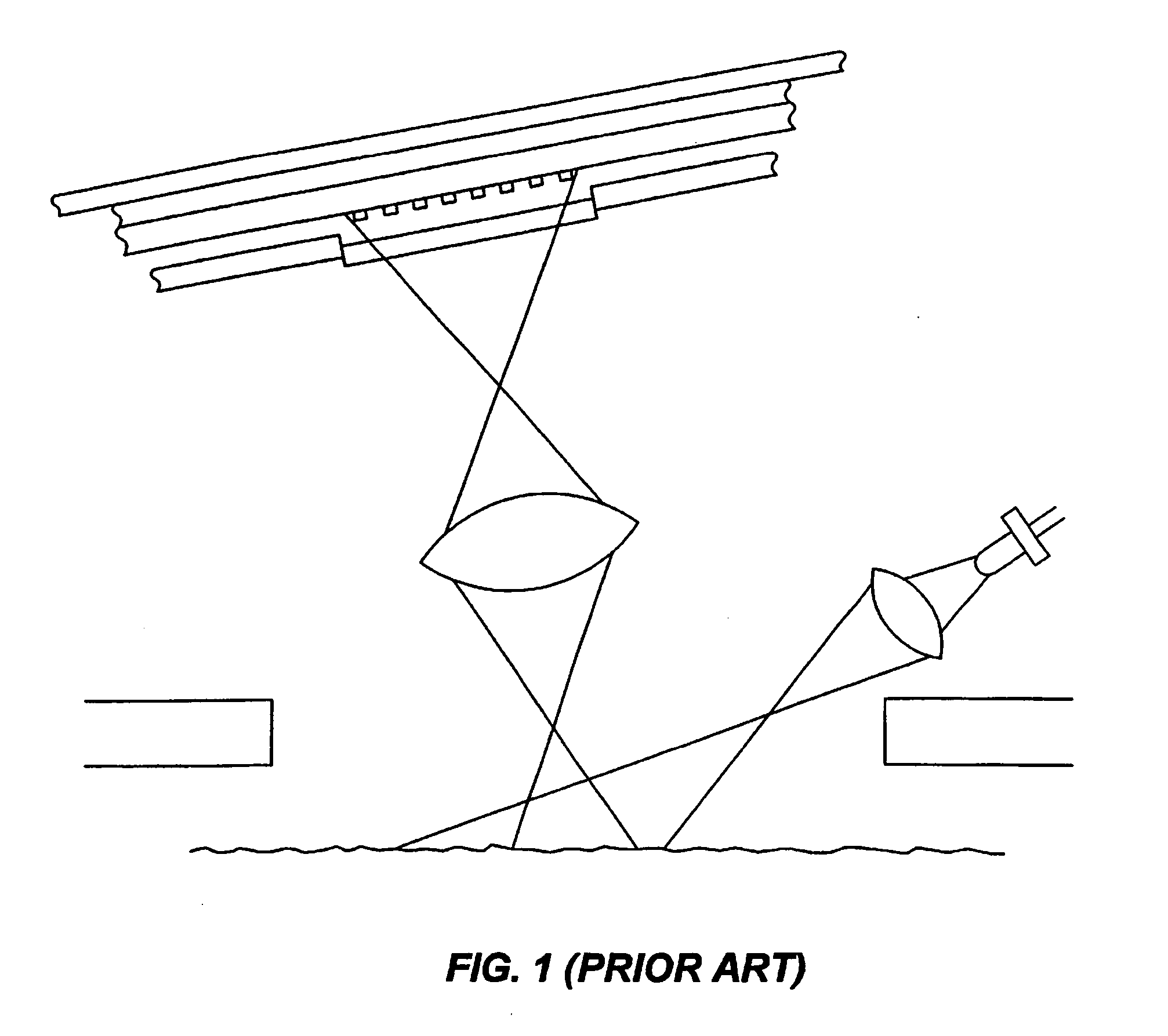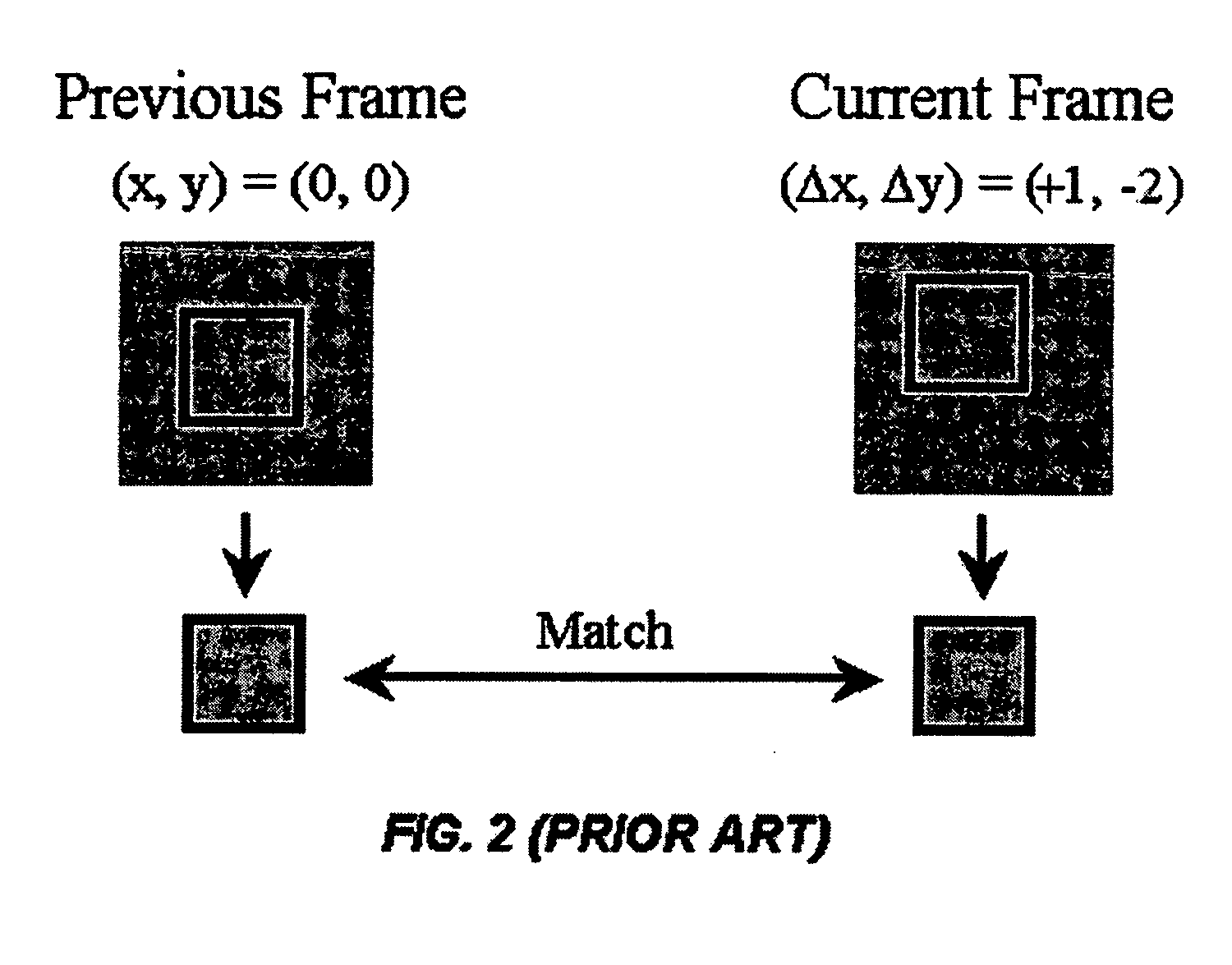Optical tracking sensor method
a tracking sensor and optical tracking technology, applied in the field of scanning devices, can solve the problems of no known prior art having the ability to induce remote wake-up, the matching algorithm finds a false match, and the work surface is likely to be too smooth and devoid of features for proper operation
- Summary
- Abstract
- Description
- Claims
- Application Information
AI Technical Summary
Benefits of technology
Problems solved by technology
Method used
Image
Examples
Embodiment Construction
[0022] The present invention is a method of using an optical sensor to determine displacement relative to a work surface. FIG. 3 shows the functional block structure of the invention, and FIG. 4 demonstrates a typical floor plan of an integrated circuit implementation of the method. The imaging sensor used in the system is a two-dimensional array of photodiodes that is positioned at the focused image of the work surface. The incidence of photons on the silicon in the image sensor array pixels generates electrons that are collected by the pixel photodiodes. After a collection (or integration) period, a frame of pixel signals is read out and converted to digital values by the ADC (analog / digital converter). The digital image data is passed through a filter and / or correction circuitry. The filtered data from an image frame is then stored in one of two or three memory banks.
[0023] As the mouse (or other device containing the sensor) is moved, another image is captured and stored in the...
PUM
 Login to View More
Login to View More Abstract
Description
Claims
Application Information
 Login to View More
Login to View More - R&D
- Intellectual Property
- Life Sciences
- Materials
- Tech Scout
- Unparalleled Data Quality
- Higher Quality Content
- 60% Fewer Hallucinations
Browse by: Latest US Patents, China's latest patents, Technical Efficacy Thesaurus, Application Domain, Technology Topic, Popular Technical Reports.
© 2025 PatSnap. All rights reserved.Legal|Privacy policy|Modern Slavery Act Transparency Statement|Sitemap|About US| Contact US: help@patsnap.com



